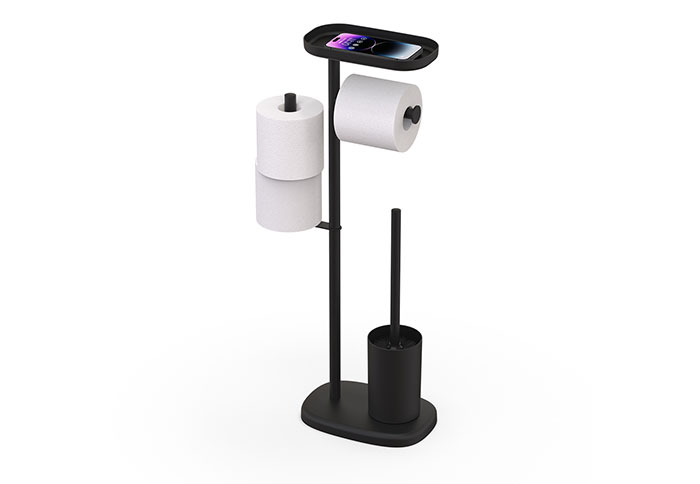The ultimate guide to tissue roll holders: everything you need to know
The Ultimate Guide to Tissue Roll Holders: Everything You Need to Know
Tissue roll holders are an essential fixture in many homes, businesses, and public spaces, providing convenient access to hygienic tissue paper. But with so many options available, choosing the right tissue roll holder can be overwhelming. This ultimate guide will provide everything you need to know about tissue roll holders, from their types and materials to their uses and care.
Types of Tissue Roll Holders
There are several types of tissue roll holders available, each designed for different uses and spaces. Here are the most common types:
1.Wall-Mounted Holders: These holders are attached to a wall and are ideal for use in restrooms or other areas where space is limited. They come in various styles, including sleek designs for modern décors and more traditional styles for classic décors.
2.Freestanding Holders: These holders stand alone and are easy to move around, making them perfect for use in homes, offices, or public spaces where flexibility is key. They often have weighted bases for stability.
3.Tabletop Holders: Tabletop tissue roll holders are small and compact, designed to sit on a table or countertop. They are great for smaller spaces or for temporary use.
4.Suspension Holders: These holders hang from a hook or rod and are often used in areas where space is at a premium, such as dorms or small apartments.

Materials
Tissue roll holders are made from various materials, each with its own advantages and disadvantages. Here are the most common materials:
1.Plastic: Plastic holders are lightweight, relatively inexpensive, and easy to clean. However, they may not last as long as metal holders and may not provide as much stability.
2.Metal: Metal holders are sturdy, durable, and can have a more luxurious look. However, they tend to be heavier and more expensive than plastic holders.
3.Wood: Wood tissue roll holders have a natural, classic look that blends well with many décors. However, they require more care and can be more expensive than plastic or metal holders.
Uses
Tissue roll holders are used in a variety of settings, from homes to businesses to public spaces. Some common uses include:
1.Restrooms: Tissue roll holders are a crucial fixture in restrooms, providing convenient access to hygienic tissue paper for handwashing or cleanup.
2.Offices: Office workers often rely on tissue roll holders for quick cleanup or handwashing during breaks or after handling potentially contaminated materials.
3.Kitchens: In kitchens, tissue roll holders provide easy access to paper towels for cleanup or handwashing after handling raw meat or other potentially contaminated foods.
4.Public Spaces: Tissue roll holders are also common in public spaces such as libraries, coffee shops, or airports, providing a hygienic way for people to clean their hands or wipe away excess moisture or dirt.
Care and Maintenance
To ensure longevity and hygiene, it's important to properly care for your tissue roll holder. Here are some tips for cleaning and maintaining your tissue roll holder:
1.Regular Cleaning: Wipe the holder regularly with a damp cloth to remove dust and grime. Pay special attention to crevices and areas where dirt can accumulate.
2.Disinfection: If possible, disinfect the holder rehular using a disinfectant spray or wipe to kill any lingering germs or bacteria that may be present. This is especially important in high-traffic areas or areas where Germicidal Spray Hand Sanitizer is frequently used.
3.Repair and Upkeep: If your tissue roll holder starts to show signs of wear and tear, such as creaking hinges or loose parts, it's important to repair or replace it promptly to prevent germ growth and other sanitation issues.
